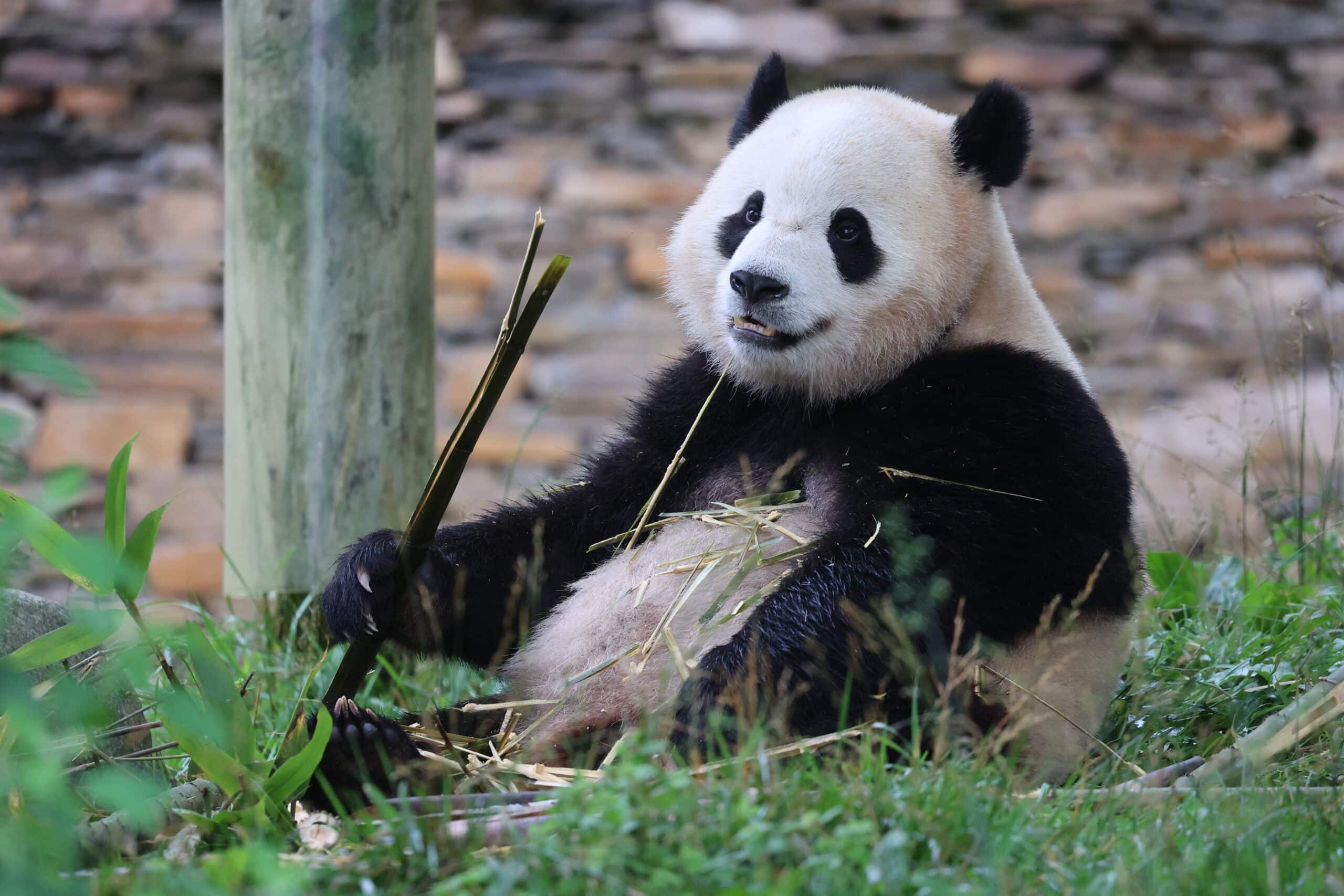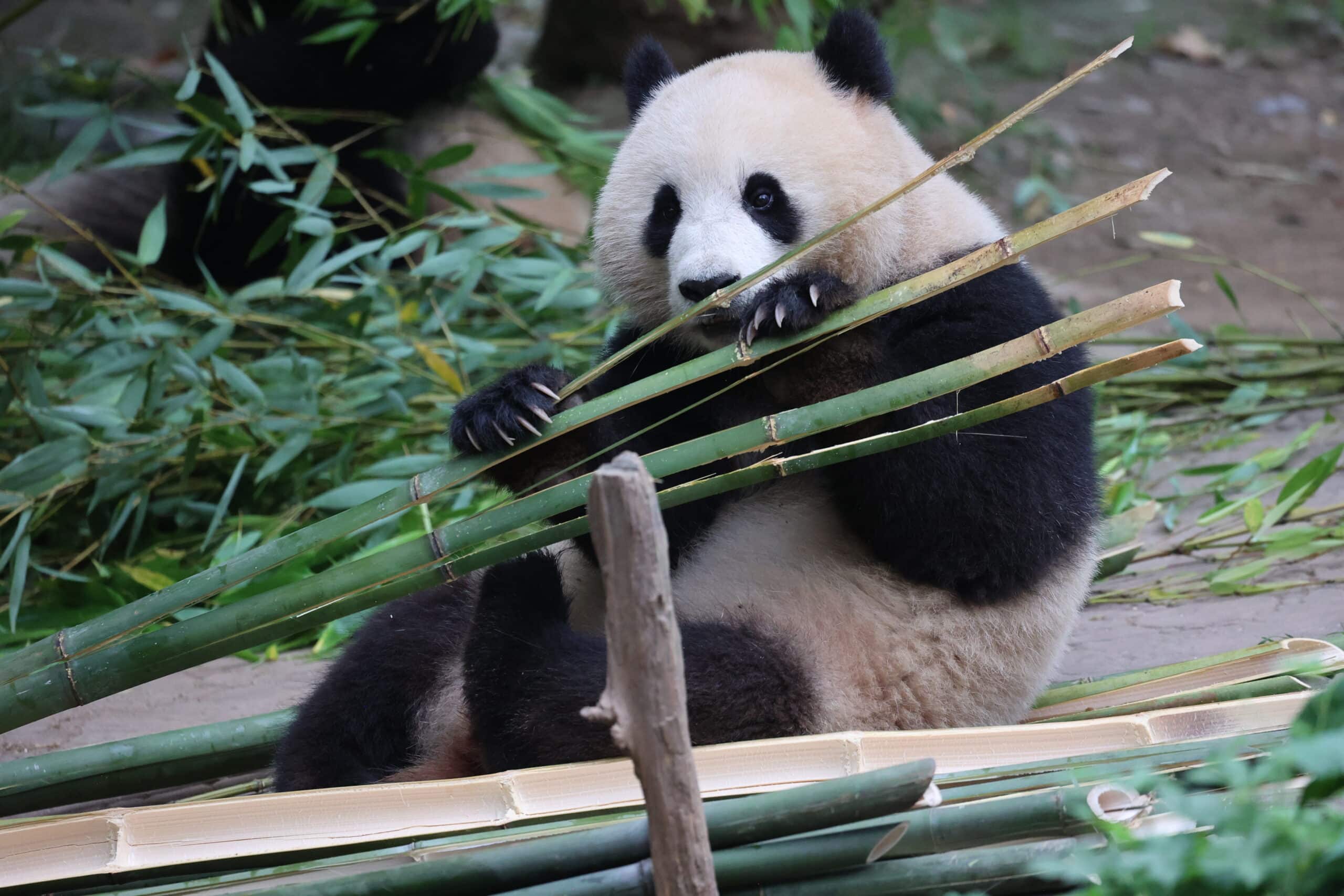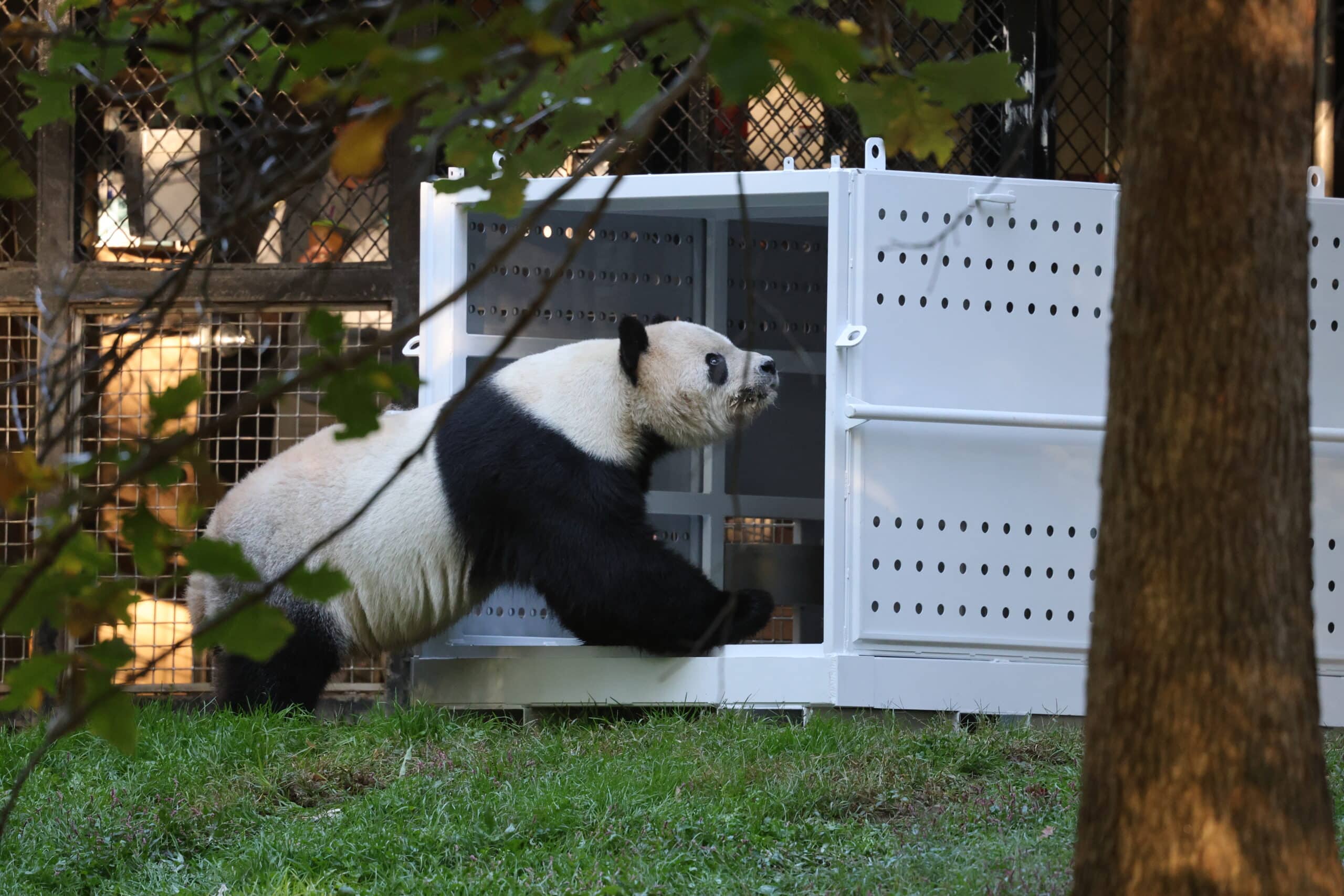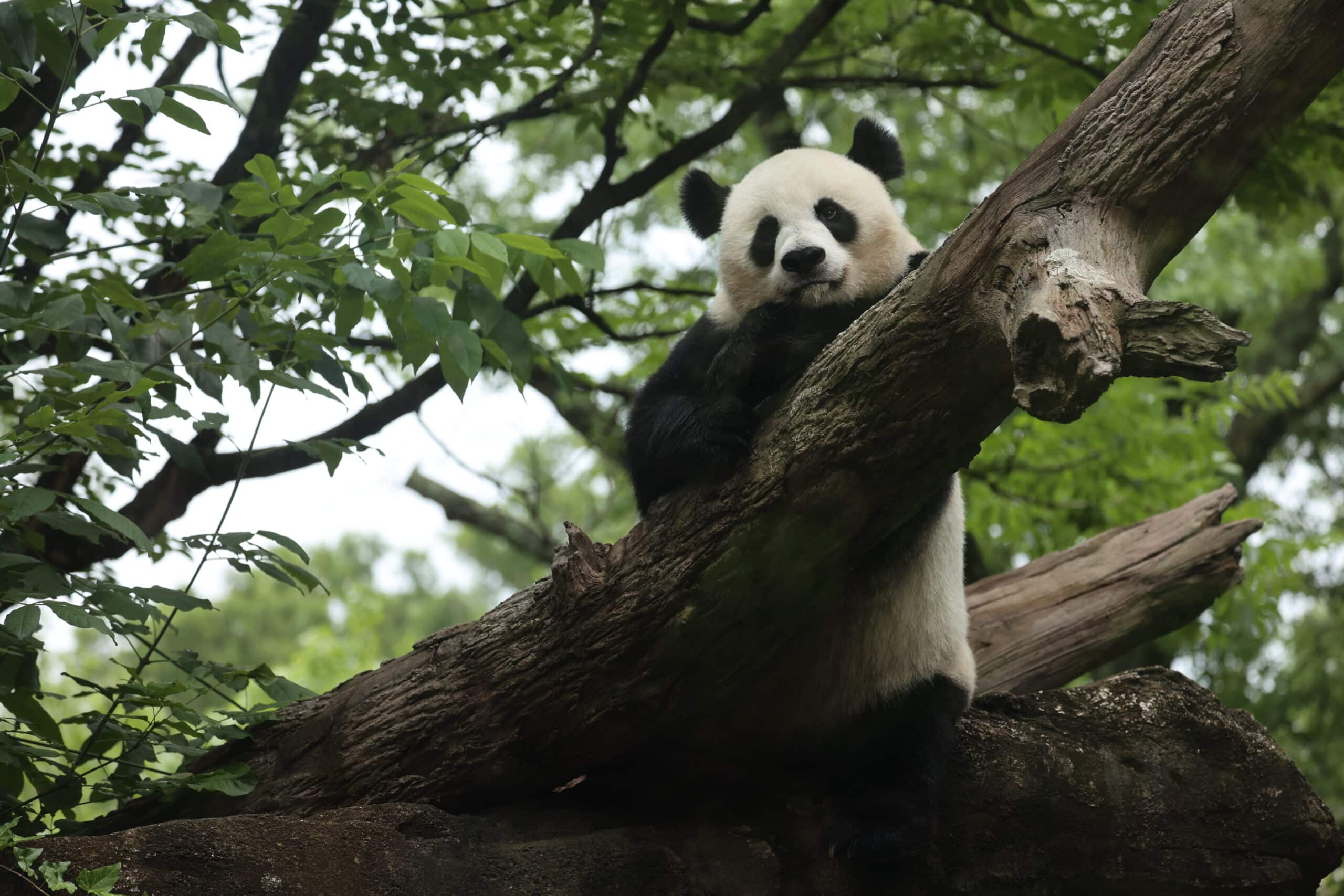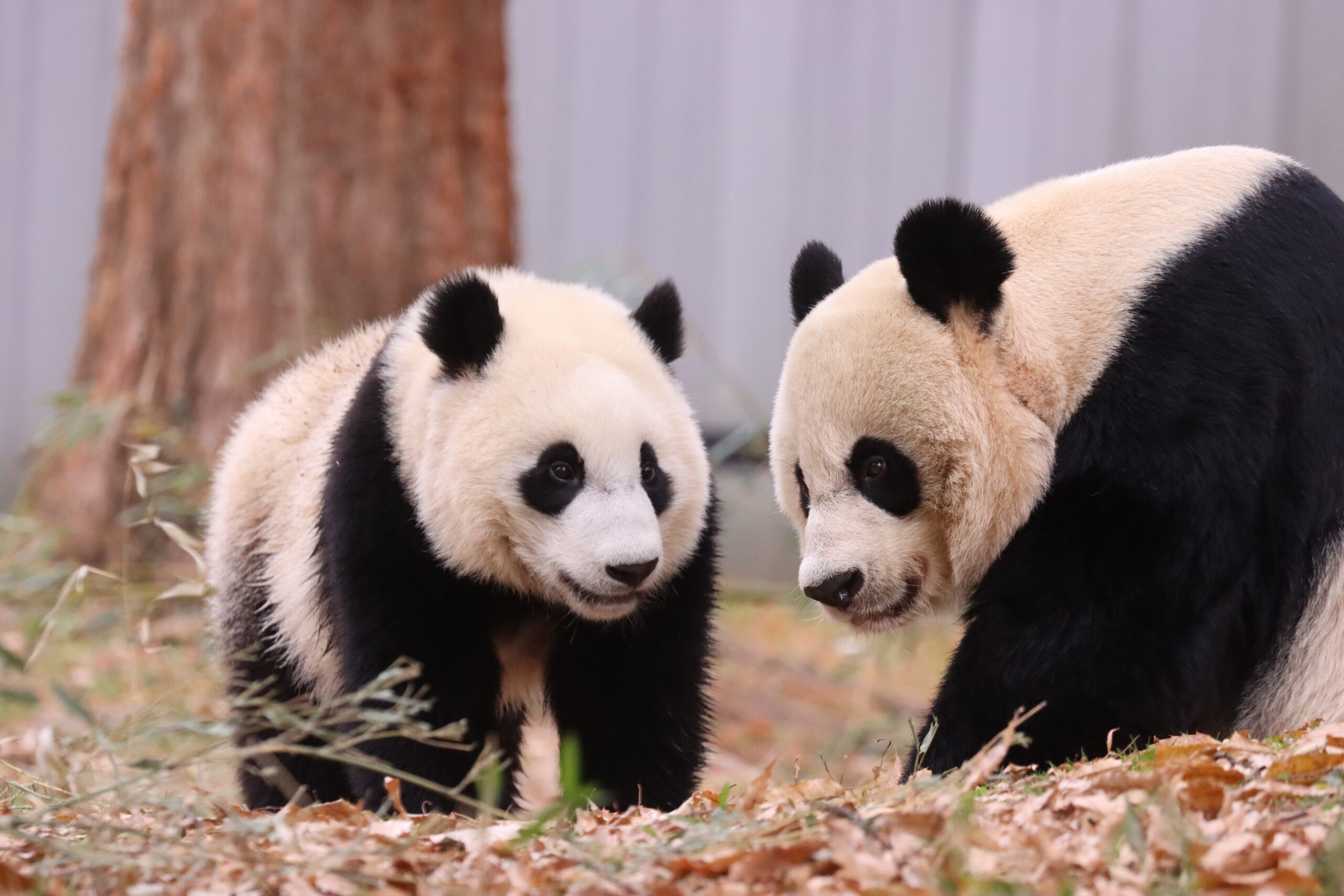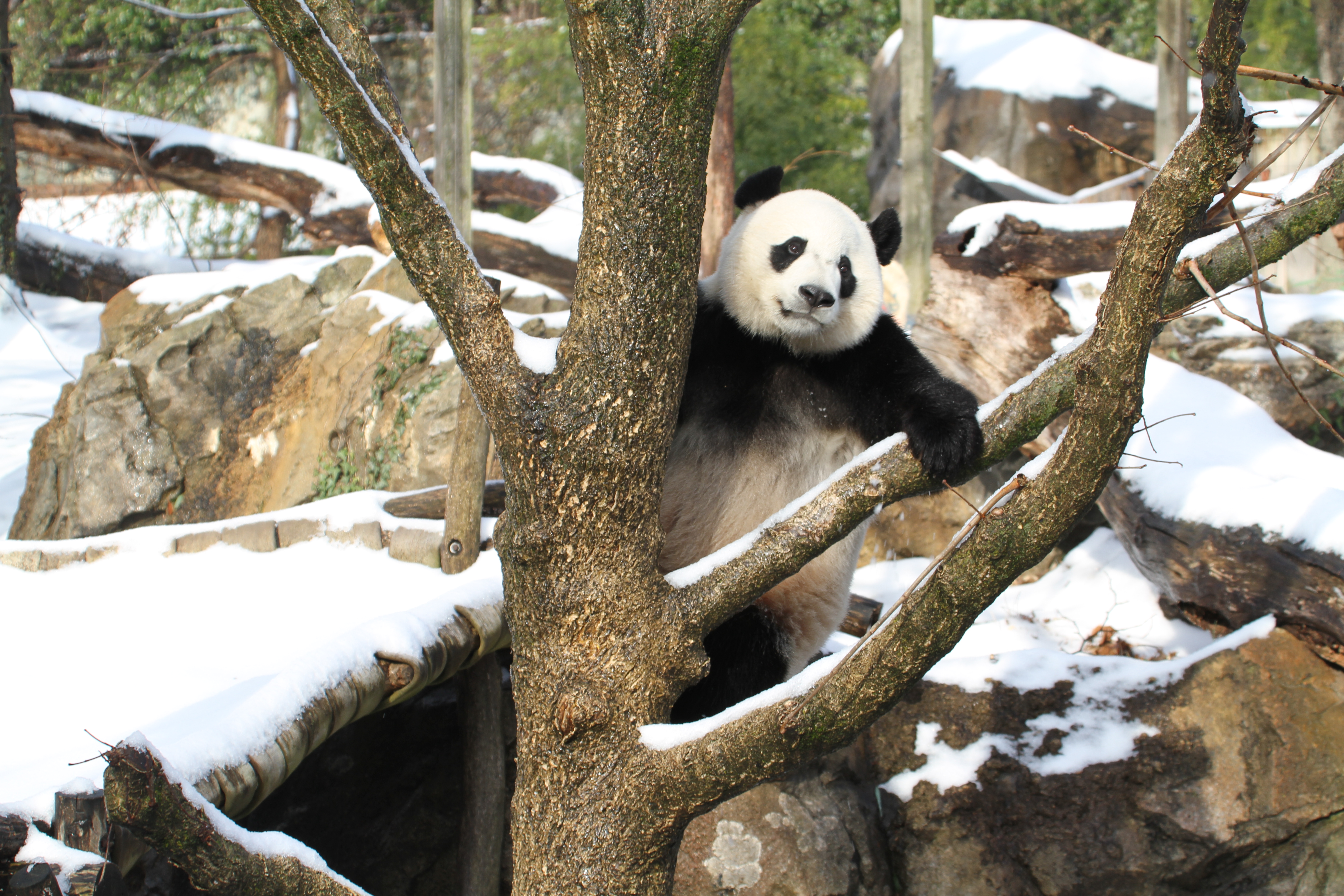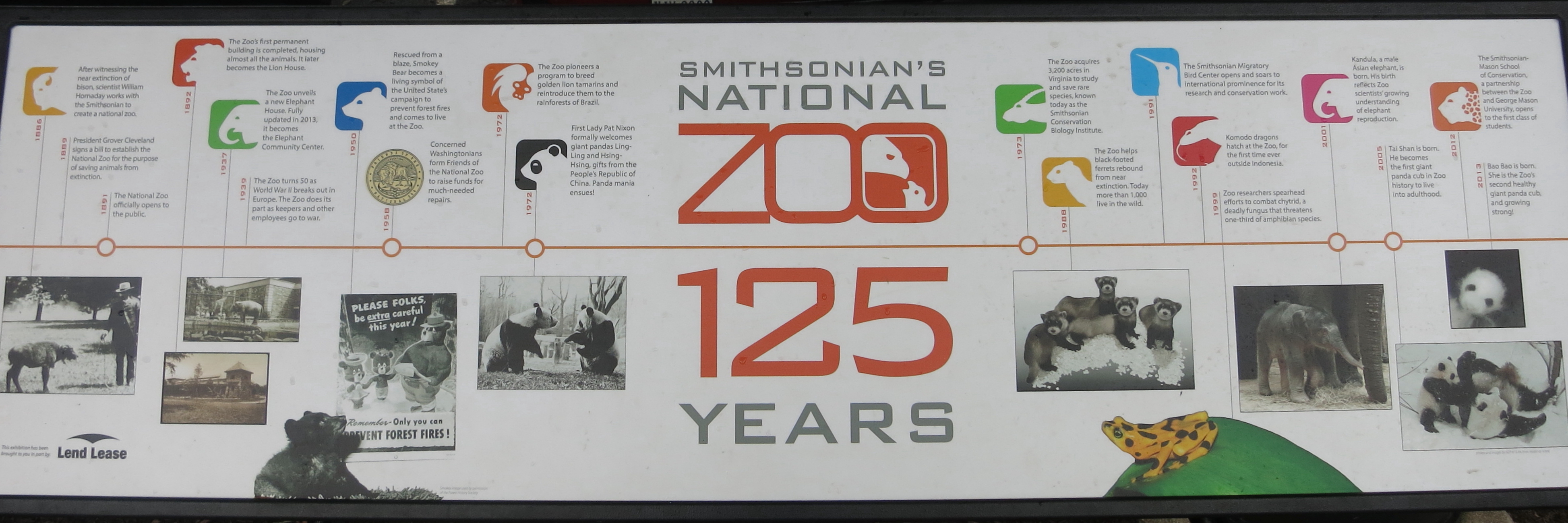
Smithsonian's National Zoological Park
Washington D.C., U.S.A.
About Smithsonian's National Zoological Park
The Smithsonian’s National Zoological Park is a part of the Smithsonian Institution, the world’s largest museum and research complex. The Smithsonian includes 18 museums and galleries, as well as the National Zoo.
The words ‘National Zoo’ represent a large, complex, and diverse organization with a multifaceted mission demonstrate leadership in animal care, science, education, and sustainability.
The National Zoo is far more than a place where people can see wild animals:
“We are a 163-acre zoological park set amid Rock Creek Park in the heart of Washington, D.C. Open to the public 364 days a year, we are home to 2,000 individual animals of nearly 400 different species. Our best known residents are our giant pandas, Tian Tian, Mei Xiang, and Bao Bao.
The Zoo is one of Washington’s and the Smithsonian’s most popular tourist destinations. We welcome up to two million visitors—from the local community, the country, and the rest of the world—every year, free of charge.
We are a place where people can marvel at wonderful animals, learn about wildlife and its conservation, and enjoy a beautiful, peaceful experience among our gardens. We are a member of the Association of Zoo Horticulture. We are also a research, conservation, and education center for endangered species. And, we boast a state-of-the-art veterinary hospital and extensive research facilities.
We are also a 3,200-acre rural campus in Front Royal, Virginia, at the edge of Shenandoah National Park. (This campus, the Smithsonian Conservation Biology Institute in Front Royal, is closed to the public.) Here, various endangered species breed in more expansive facilities. Many of our scientists studying endangered species and offering education and professional training are based here, too.
We work in field stations around the world: from China in Asia to Gabon in Africa, Spain in Europe, Venezuela and Panama in South and Central America, and Nevada and Nova Scotia in North America.
We are also Friends of the National Zoo (FONZ), the private side of our public/private partnership. More than 40,000 families are members of FONZ, and these dedicated zoogoers are our greatest supporters and the best advocates for our cause. FONZ’s primary role is to make friends and raise funds to support our joint mission.”
Official website: nationalzoo.si.edu
Giant pandas at Smithsonian's National Zoological Park
At dinner in Beijing in February 1972, First Lady Patricia Nixon mentioned her fondness for giant pandas to Chinese Premier Zhou Enlai. Eager for better relations with the U.S., Zhou knew just what to say: “I’ll give you some.” On April 16, 1972, President and Mrs. Nixon formally welcomed giant pandas Ling Ling and Hsing Hsing to the Smithsonian’s National Zoo. Over the next 20 years, Ling Ling and Hsing Hsing produced five cubs. Sadly, none of the offspring survived for more than a few days. But ever since their arrival, the pandas have symbolized cross-cultural collaboration between the United States and China.
The arrival of giant pandas drew millions of fans from around the world to the Zoo. More importantly, it gave the Zoo an unparalleled opportunity to study giant panda behavior, health, and reproduction. Specifically, it allowed scientists at the Smithsonian Conservation and Biology Institute to learn about panda estrus, breeding, pregnancy, pseudopregnancy and cub development. Armed with this knowledge, the Zoo became a leader in giant panda conservation and shared the information learned with other institutions that wanted to care for and breed this endangered species.
On December 6, 2000, giant pandas Mei Xiang and Tian Tian arrived at the Zoo. Unlike Ling Ling and Hsing Hsing, however, the Zoo’s second pair of pandas are on loan. In exchange, the Zoo contributes funds and expertise toward conservation efforts in China. The Zoo reached an agreement with the Chinese government, stipulating that the pair could live at the Zoo for 10 years in exchange for $10 million. On January 20, 2011, Zoo Director Dennis Kelly and Secretary General of the China Wildlife Conservation Association Zang Chunlin signed a new Giant Panda Cooperative Research and Breeding Agreement, which stipulated that giant pandas Mei Xiang and Tian Tian would remain at the Zoo until December 15, 2015.
Giant pandas will continue to live at the Zoo through the end of 2020. The breeding agreement signed by Zoo Director Dennis Kelly and Li Qingwen, deputy secretary general of the China Wildlife and Conservation Association (CWCA), will take effect December 7, 2015, through December 7, 2020.
In December 2011, David M. Rubenstein donated $4.5 million to the Zoo to fund the giant panda program through 2016. In appreciation, the giant panda complex– home to giant pandas Tian Tian (male) and Mei Xiang (female)– was named the David M. Rubenstein Family Giant Panda Habitat. In addition, young conservation biologists in the U.S. and in China who were awarded Zoo fellowships for their work to save this endangered species were named “David M. Rubenstein Fellows.” The gift was used to fund conservation efforts in China, reproductive science, professional training programs, giant panda care at the Zoo, upgrades to the Zoo habitats and public education. Mr. Rubenstein provided an additional $4.5 million donation in fall 2015 to support the program through 2020.
The gift allows the Zoo to expand its educational outreach efforts and the Zoo’s animal care and the Smithsonian Conservation Biology Institute’s scientific team to proceed with the five-year science plan established with their Chinese colleagues from the China Wildlife Conservation Association. The science plan has specific goals: to examine the creation and impact of corridors to link fragmented habitats that will benefit giant pandas and other wildlife species, including promoting genetic diversity; examine how to restore habitats, especially those where pandas appear to be making a comeback; provide advice on giant panda reintroduction; examine the potential impact of transmissible diseases on giant pandas and other wildlife species, including providing advice on implementing new programs associated with a Wildlife Disease Control Center being built in Sichuan Province; and continue research on giant panda reproduction and management, because, although there has been major success in Chinese breeding centers, some pandas still experience reproductive challenges.
Mei Xiang, Tian Tian and their youngest cub Xiao Qi Ji have left the Smithsonian’s National Zoo and returned to China on November 8, 2023.
On October 15, 2024 Bao Li & Qing Bao moved to Washington D.C. The American Capital’s third panda pair will make it’s public debut in January 2025.
Ling Ling

Born: approx. September 1970
Place of birth: wildbornDied on December 30, 1992 at the Smithsonian’s National Zoo
Hsing Hsing
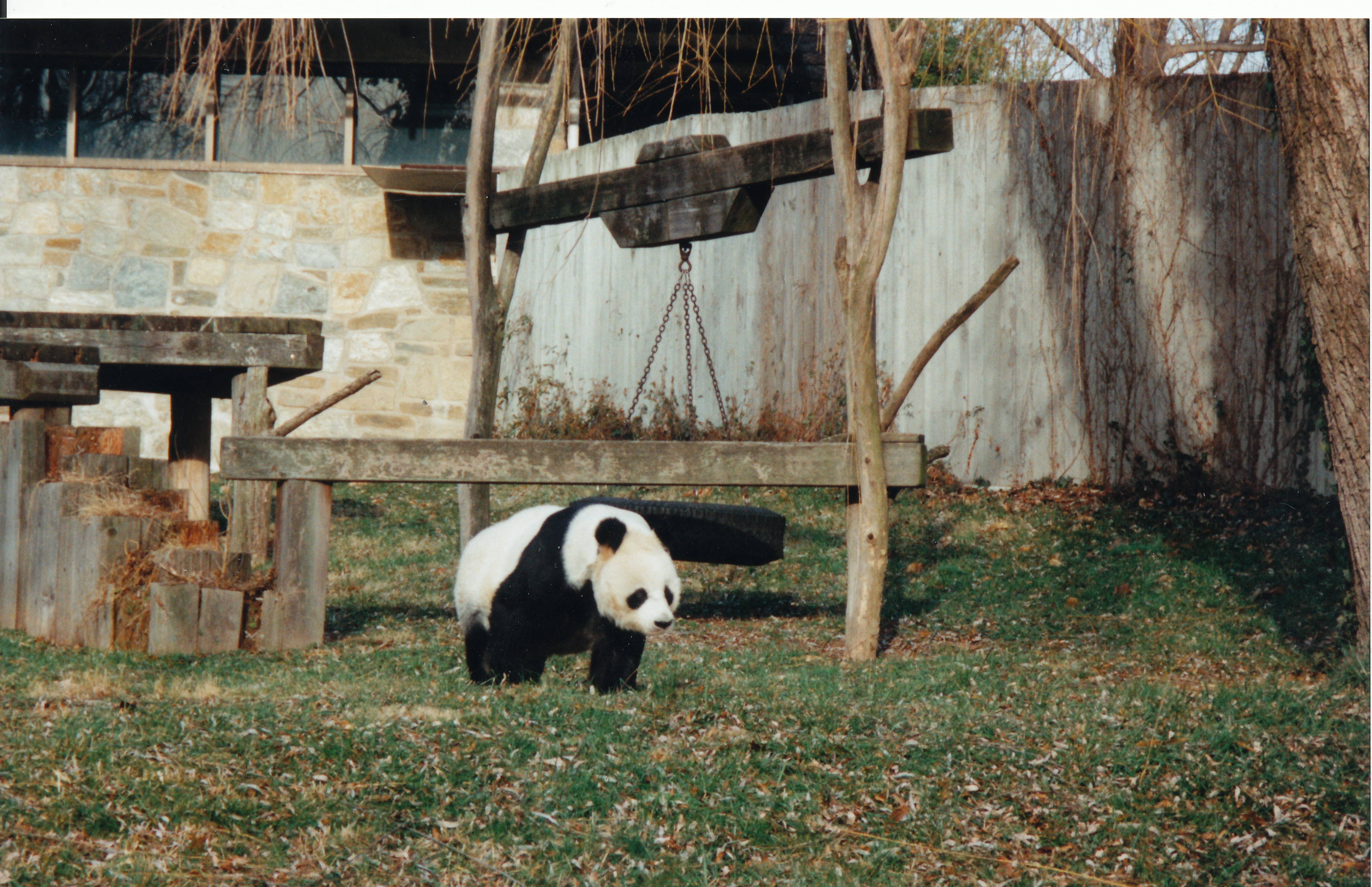
Born: approx. August 1971
Place of birth: wildbornDied on November 28, 1999
at the Smithsonian’s National ZooChia Chia

Born: approx. September 1972
Place of birth: wildbornLived at the London Zoo, London, United Kingdom from September 14, 1974 until September 2, 1988
On loan to the Smithsonian’s National Zoo, Washington D.C., U.S.A. from March 6 until July 10, 1981, to the Cincinnati Zoo & Botanical Garden, Cincinnati, U.S.A. from September 2 until November 30, 1988 and to the Chapultepec Zoo, Mexico City, Mexico from November 30, 1988, where he died on October 13, 1991.
unnamed cub

Born: July 21, 1983
Place of birth: Washington D.C., U.S.A.Died on July 21, 1983 at the Smithsonian’s National Zoo
unnamed cub

Born: August 5, 1984
Place of birth: Washington D.C., U.S.A.Died on August 5, 1984 at the Smithsonian’s National Zoo
unnamed cub

Born: June 23, 1987
Place of birth: Washington D.C., U.S.A.Died on June 26, 1987 at the Smithsonian’s National Zoo
unnamed cub

Born: June 23, 1987
Place of birth: Washington D.C., U.S.A.Died on June 23, 1987 at the Smithsonian’s National Zoo
unnamed cub

Born: September 1, 1989
Place of birth: Washington D.C., U.S.A.Died on September 3, 1989 at the Smithsonian’s National Zoo
Tian Tian
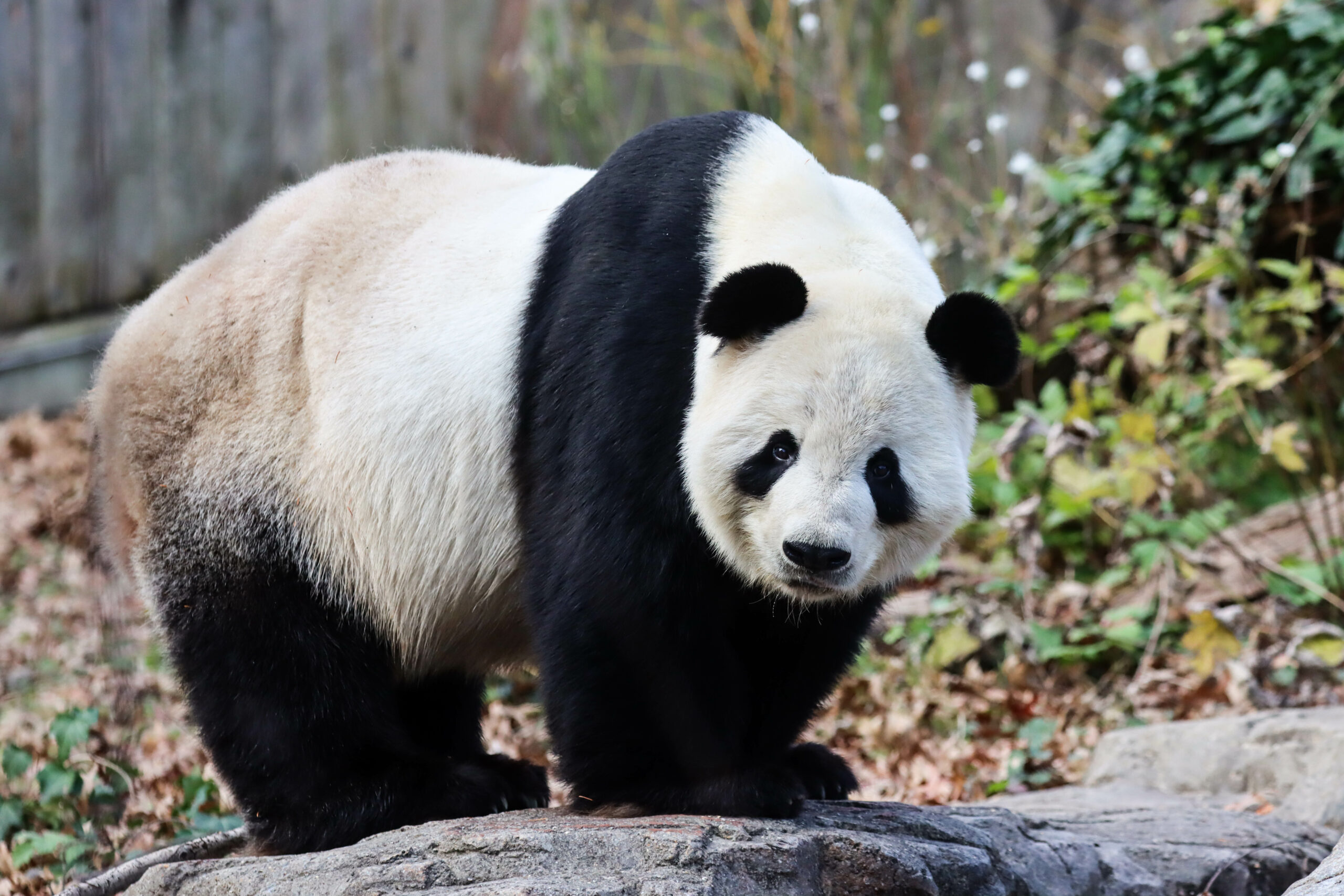
Born: August 27, 1997
Place of birth: Wolong, ChinaLived at the Smithsonian’s National Zoo
from December 6, 2000 until November 8, 2023Resident of CCRCGP
since November 9, 2023Mei Xiang
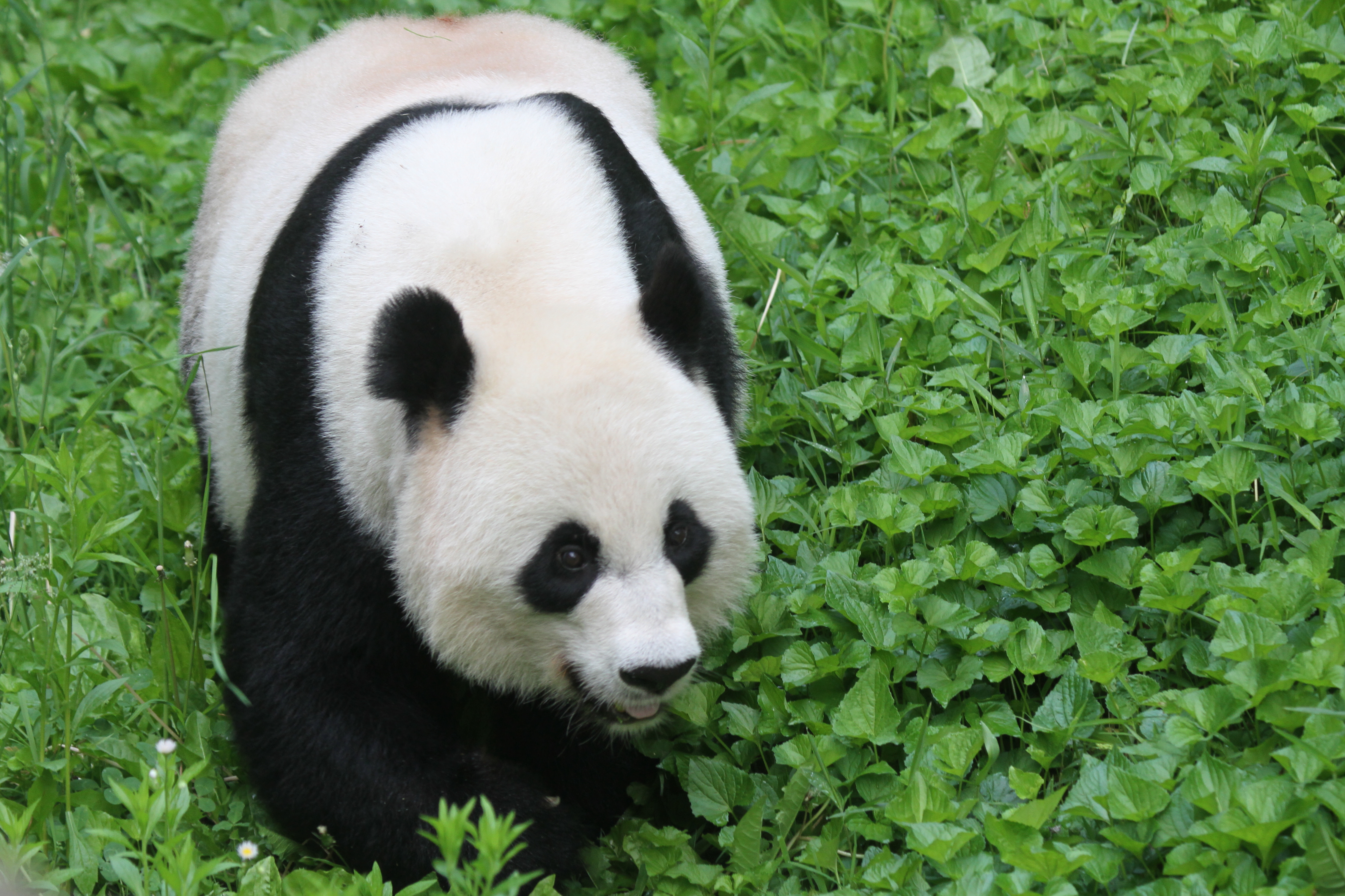
Born: July 22, 1998
Place of birth: Wolong, ChinaLived at the Smithsonian’s National Zoo
from December 6, 2000 until November 8, 2023Resident of CCRCGP
since November 9, 2023Tai Shan
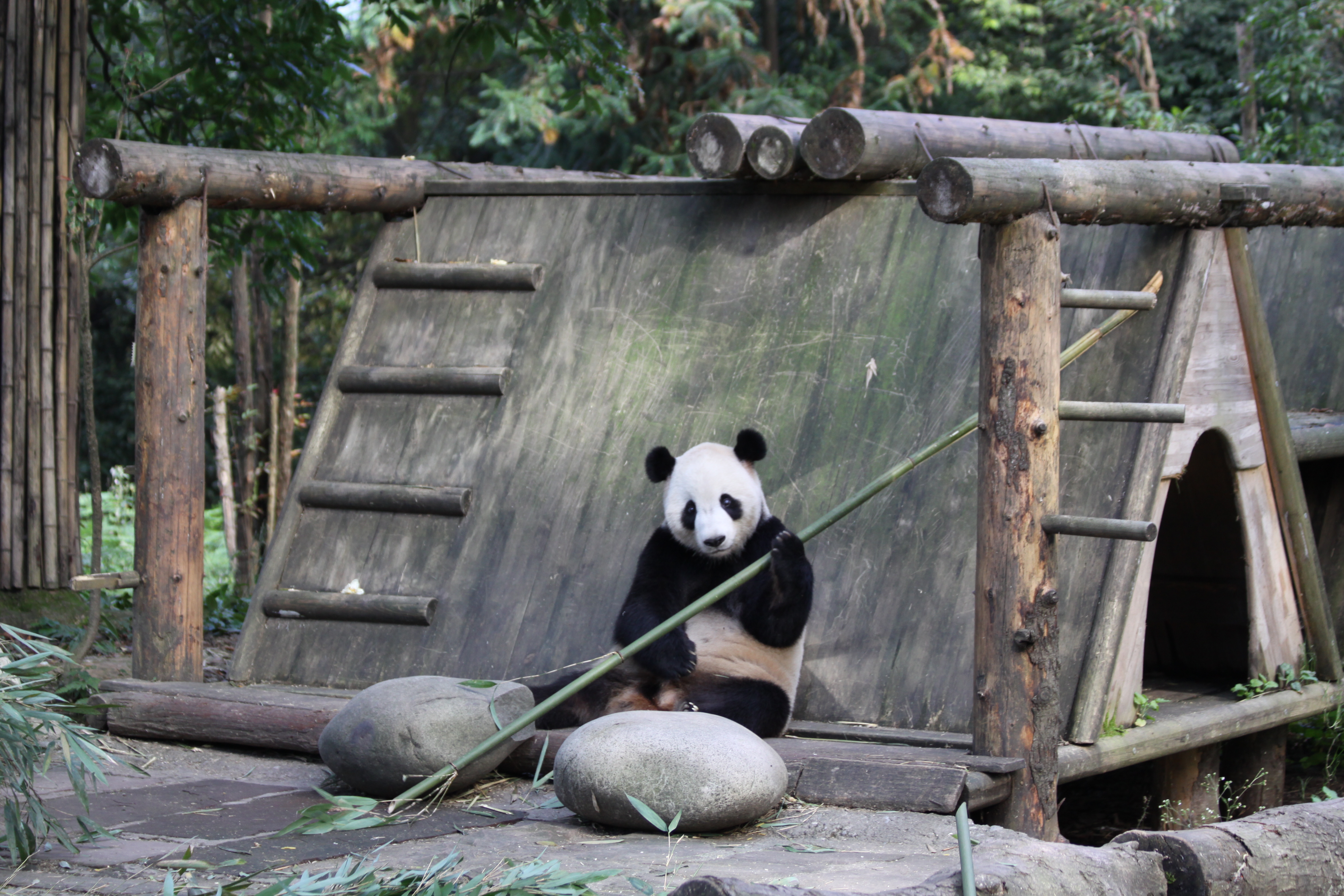
Born: July 9, 2005
Place of birth: Washington D.C., U.S.A.Resident of CCRCGP Du Jiang Yan Base
since February 15, 2014unnamed cub

Born: September 16, 2012
Place of birth: Washington D.C., U.S.A.Died on September 23, 2012 at the Smithsonian’s National Zoo
Bao Bao
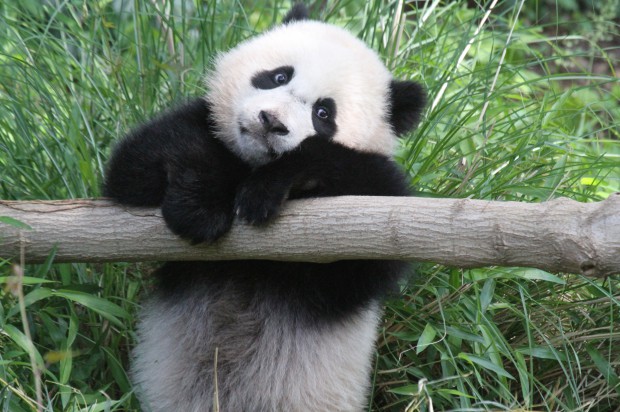
Born: August 23, 2013
Place of birth: Washington D.C., U.S.AResident of Smithsonian’s National Zoo
since August 23, 2013unnamed cub

Born: August 23, 2013
Place of birth: Washington D.C., U.S.A.Died on August 24, 2013 at the Smithsonian’s National Zoo
Bei Bei
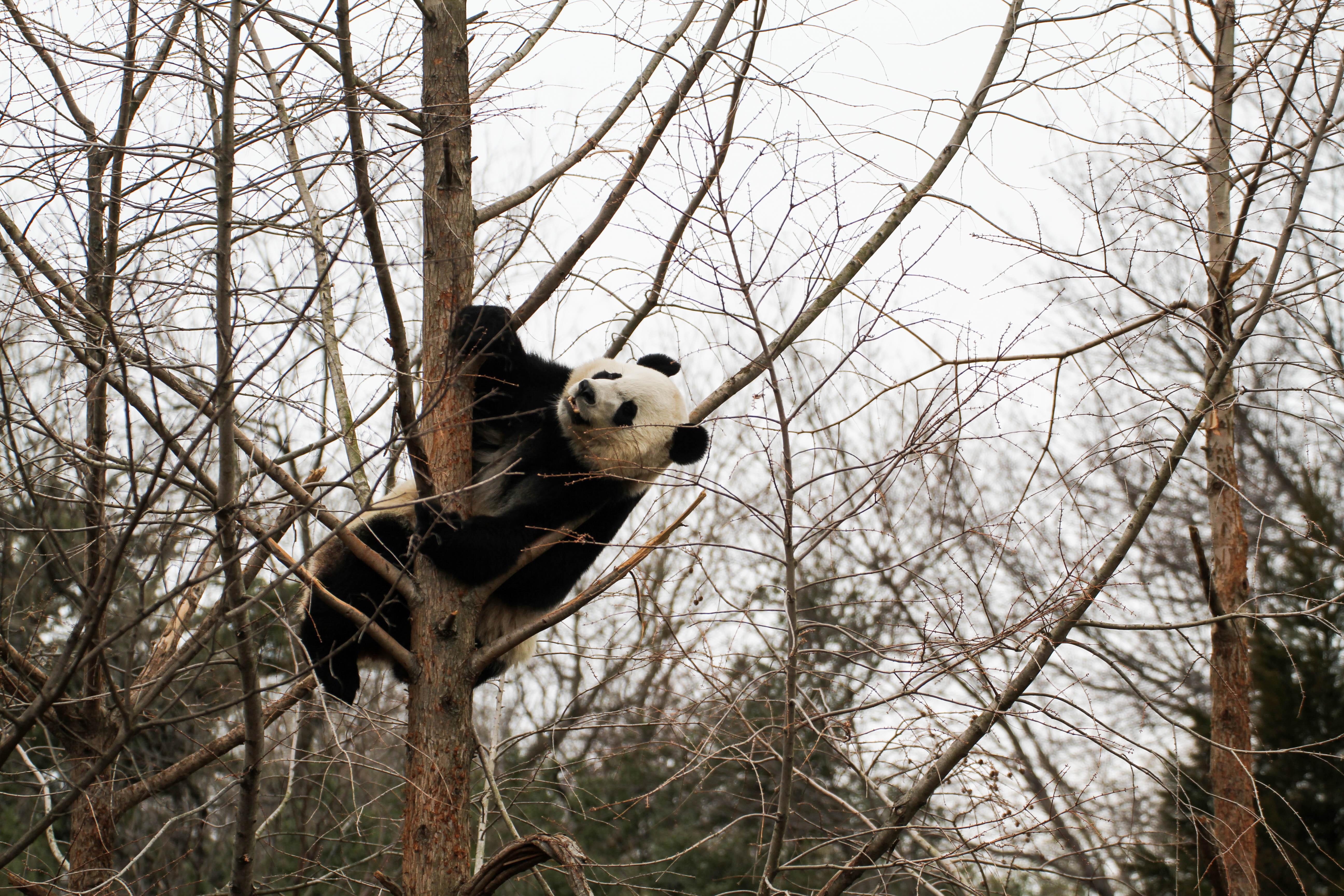
Born: August 22, 2015
Place of birth: Washington D.C., U.S.A.unnamed cub

Born: August 22, 2015
Place of birth: Washington D.C., U.S.A.Died on August 26, 2015 at the Smithsonian’s National Zoo
Previous giant pandas

Latest News
Smithsonian's National Zoological Park
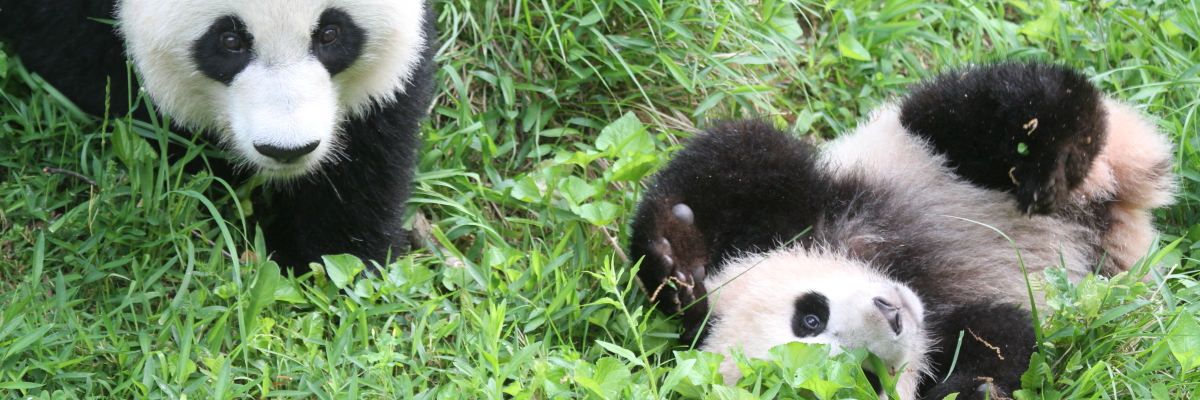
Photo Albums






